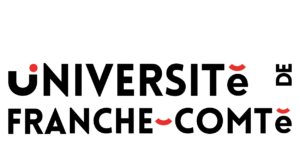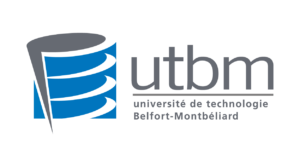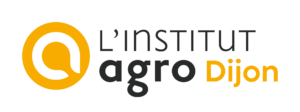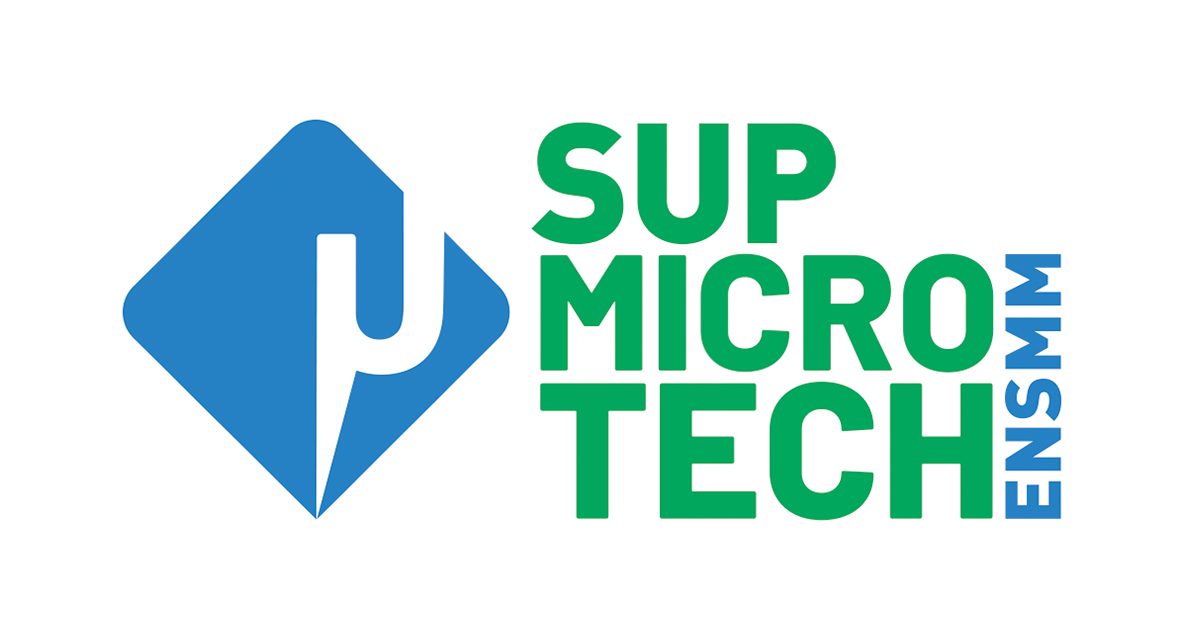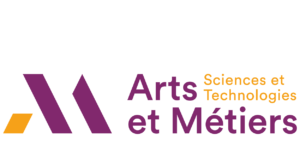Fellowships
ISITE-BFC promotes excellence and internationalization of research in Bourgogne-Franche-Comté. ISITE-BFC relies on a rigorous selection procedure and on the competence of international experts for the evaluation of candidates and their projects.
Fellowships are awarded to excellent or rising researchers from UBFC, and to junior Tenure Tracks and high level international researchers, to work on ambitious and high quality research projects.
Tenure tracks
ISITE-BFC aims at boosting the research in the Bourgogne-Franche-Comté Region through Tenure Tracks job offers. These fellowships are granted to promote young researchers who show the potential to reach European Research Council (ERC) or Institut Universitaire de France (IUF) recognition within the period of the fellowship. They play a leading and positive role for research laboratories and host structures.
Canada
Host lab: Laboratory for Research on Learning and Development – LEAD
James Schmidt has expertise in research on learning, attention, cognitive control, and neural networks. His primary experimental research line focuses on human contingency learning. That is, he studies how we learn (often unconsciously) the regularities in our environment and use this knowledge to better interact with our world. He also does a lot of research on attention and cognitive control, albeit primarily as a critic of mainstream cognitive control theories. This includes work on conflict monitoring and attentional control, in addition to recent work on task switching. He has considerable expertise in neural network modelling. In particular, he programmed a neural network model of episodic memory that he has been applying widely to a broad range of research fields. He has also published work on temporal learning, formal reasoning, binding, and the Stroop effect.
Keywords: cognitive psychology, neural networks, contingency learning, binding, attention, cognitive control, timing, task switching, computational modelling, episodic memory.
General conclusion:
The project made several theoretical and applied advances. The project contributed to our knowledge of basic processes in human contingency learning and the optimal conditions for learning new information. This work was further applied to early music learning, with strongly encouraging results. The work also contributed to our understanding of cognitive control, specifically, how we deal with changing task environments and how we deal with conflicting information. Several reports also explored the nature and organization of bilingual memory. Finally, a practical application for data concatenation was published for free and open use.
United Kingdom
Host Lab: Laboratoire interdisciplinaire Carnot de Bourgogne – ICB
Simon KIMBER is a materials chemist, with significant expertise in electronic and magnetic properties. He has worked in central facilities for synchrotron and neutron scattering, and made significant R&D advances in scattering techniques. He has applied these to both solid state and solution phase systems, and has recently developed an interest in the interfaces between solvated species and solvent.
Keywords: X-ray and neutron scattering, in-situ measurements, materials chemistry, nanoparticle interfaces, solvent restructuring.
Japon
Lab Host: Institut Mathématique de Bourgogne – IMB
Taro KIMURA’s scientific expertise is based on theoretical physics, in particular, mathematical aspects of quantum field theory. He has been working on supersymmetric gauge theory and superstring theory with emphasis on its connection to quantum algebraic structure, e.g., W-algebras, quantum affine algebras, arising through deformation quantization of the associated moduli space. He also has been exploring the geometric correspondence between the gauge theory moduli space and the classical/quantum integrable system. The main tools used in his studies are based on the geometric and algebraic approach to matrix model, quantum inverse scattering method in quantum integrable systems and the path integral localization for supersymmetric gauge theory.
Keywords: Quantum Field Theory, Superstring Theory, Supersymmetric Gauge Theory, Conformal Field Theory, W-algebra, Quantization of Moduli Space, Integrable System, Random Matrix Theory
General conclusion:
During the project “CQAG”, I have worked mainly on Quantum Field Theory, which is one of the most universal methodologies in Theoretical and Mathematical Physics. I have explored its mathematical aspects and various applications. One of the main results of the project is about the infinite dimensional algebraic structure associated with the moduli space of gauge theory. For example, I have elucidated that the equivariant integral over the quiver variety is concisely described using the vertex operators obtained through quantization of the moduli space. I have also explored the geometric correspondence between gauge theory and quantum integrable system (Bethe/Gauge correspondence) for orthogonal/symplectic gauge theory and for supergroup gauge theory.
France
Lab Host: Lipides, Nutrition, Cancer – LNC
Olivier BURGY has acquired significant expertise in pulmonary fibrosis. He has studied the mechanisms leading to the development and progression of pulmonary fibrosis and the heat shock proteins (HSP) involvement in these processes, as well as their role as potential therapeutic targets. His work has shown that inhibition of HSPB5 (HSP that promotes cell migration and invasion by modulating signal transduction pathways in cancer pathologies) inhibits fibrosis induced by the anti-cancer agent bleomycin. Olivier BURGY has also developed a research axis on the role of extracellular vesicles (EVs) in experimental and human pulmonary fibrosis. Through his scientific career, he has acquired a solid knowledge of cellular and molecular biology, particularly in development signalling (TGF, WNT) and in wound healing/tissue fibrosis processes.
Keywords: Extracellular vesicles, heat shock proteins, idiopathic pulmonary fibrosis, fibrosis, bleomycin, biomarkers, theranostic, developmental signaling pathways, translational science.
Royaume-Uni
Lab Host: Agroécologie
With her background in ecology and political science, Juliette YOUNG has developed a unique interdisciplinary expertise in political ecology (consideration of human dimensions in the conservation of Nature). Her research, carried out in different settings (agriculture, forestry, fishing, hunting) and contexts (Europe, Asia, Africa), covers the policy cycle from its inception to its implementation. It integrates science-policy dialogue, knowledge co-production, associated conservation conflicts and their resolution, and evaluation of social and biodiversity outcomes. Juliette YOUNG is involved in new interdisciplinary research in which she adapts her portfolio of social science skills and methodologies to better understand socio-ecological systems, advancing knowledge to ensure a more sustainable future.
Keywords: Political ecology, conflict management, farming, land-use systems, forestry, hunting, fisheries, Europe, Asia, Africa, mixed-methods approaches, public participation, sustainability, inter-disciplinarity
General conclusion:
The TRANSFORM project started with the premise that curent failures to move towards more sustainable farming are due to conflicts between actors with different values and goals related to agriculture. Our results based on a transdisciplinary approach integrating key actors from the start of our research indicate that there are different visions of what an ideal agriculture might look like. Being forced to shift to another vision can cause conflicts as it means a complete transformation of ones own values and norms. A number of barriers and levers to change were identified through the project most of which were at the. relational institutional and cultural level – meaning we need to focus less on the need to change individual farmers but focus more on a holistic approach involving many other relevant stakeholders and addressing broader issues of power and democracy.
The Transformation Labs allowed stakehoIders to buiId on conflicts as a positive motor for change, jointly identifying solutions that couId lead to transformation at all levels.
France / Royaume-Uni
Lab Host: Laboratoire de Mathématiques de Besançon – LMB
Her research work contributes to the numerical analysis and the development of efficient numerical methods having a guaranteed precision for problems (in particular partial differential equations) arising from electronic structure calculation, quantum chemistry and materials science. Geneviève DUSSON has an expertise in numerical analysis, in particular in a posteriori error analysis and adaptive meshes for finite element methods. She performed error estimations for linear and nonlinear eigenvalue problems with different discretization methods (spectral, conforming and nonconforming finite elements). She also works on data-driven modeling, and machine learning techniques for interatomic potentials in materials science.
Keywords: Numerical analysis, PDEs, a posteriori error analysis, linear and nonlinear eigenvalue problems, Schrödinger equation, perturbation method, data-driven modeling, high-dimensional approximation
France
Lab Host: Centre des Sciences du Goût et de l’Alimentation – CSGA
Fabrice DAMON area of expertise is the cognitive development of human and nonhuman primates with a special focus on social cognition through the perspective of face processing. Familiar with the theoretical and technical aspects of facial processing, he is also proficient in designing infant research paradigms (e.g. habituation, visual paired comparison, etc.) using behavioral and imaging measures (e.g. eye-tracking, EEG, etc.). Fabrice DAMON is particularly interested in gaze behavior, which can inform on multisensory integration, for instance in the audiovisual (e.g. detection of synchronous audiovisual flow) or in the visuo-olfactory domain (e.g. face scanning in context of odor, odor/facial emotion matching). His work has led to the identification of a common mechanism of face perception in human and macaque infants, the finding of a strong visual for adult faces in infants during the first 6 months of life and the finding of a species-specific effect of face attractiveness in adult humans and macaques, highlighting the interaction of mate-choice adaptation mechanisms (species-specific) and general sensory biases (shared between primates).
Keywords: Infant cognitive development; Social cognition; Face processing; Multisensory integration (vision-olfaction); Categorization; Eye-tracking; Electroencephalography; Comparative studies.
France
Lab Host: Agroécologie
Samuel JACQUIOD has gathered a solid expertise as a general soil ecologist, including other trophic levels such as fungi, nematodes, protists, earthworms, and plants. Willing to develop practical applications of his research in microbial ecology, he has notably worked on the valorization of waste/recalcitrant bioressources, the discovery of novel functional genes of industrial interest, the improvement of plant growth, and environmental pollution diagnosis using molecular bioindicators. Samuel JACQUIOD also trained in bioinformatics and biostatistics, fields in which he is now recognized as an expert. For several years now, he has been interested in experimental evolution in order to better understand the links between microbes and plants and their consequences on plant growth, as well as the role of microbes in above- and belowground interactions, especially between plants and earthworms.
Keywords: Microbiology, ecology, agroecology, plant physiology, molecular biology, evolution, (meta)genomic, (meta)transcriptomic, bioinformatic, biostatistic, biotechnology, environmental sciences.
General conclusion:
The EMERGE project has given me the means to pursue and establish my research activities on plant-microbial interactions in Bourgogne Franche-Comté, which the successful getting of my permanent position as an associate professor at the University of Bourgogne in 2022. Altogether, I have participated in the publication of 19 scientific peer-reviewed articles during the period funded by the project. This includes 10 publications on the topic on plant-microbial interactions. Four additional publications related to the project are being prepared. The main scientific achievement of the project was the establishment of a real “know-how” in terms of manipulating the rhizosphere microbiota as a whole unit, which can be directly an operational target of artificial selection to improve plant growth. This directly enable new perspective in crop breeding, as it is know becoming conceivable to include the microbiota in varietal selection.
International coach fellowships
One of the ISITE-BFC objectives is to make possible for UBFC Research to benefit from the operational advices of internationally renowned researchers (coaches). A portfolio is granted to a foreign researcher enjoying a very high reputation in his field of research in order to coach projects to be implemented within an existing team of UBFC.
USA
Host Lab : Biogéosciences
Pieter VISSCHER will work as a joint professor. He is currently full Professor and researcher among the leaders in the field of geomicrobiology. He also is -among many other responsibilities- project leader in major National Science Foundation programs and founder and chief administrator of UConn’s Center for Integrative Geosciences. He collaborates with the industry (Petrobras, Unisense) and was intimately involved in the founding of NASA’s Astrobiology Institute.
With (post)graduate degrees and extensive training in Atmospheric Chemistry, Geochemistry, Marine Sciences, Microbiology, Biogeochemistry and in Environmental Law, his specialty is in Geomicrobiology, with a focus on biosignatures in modern and recent sedimentary systems and with applications in Astrobiology. Specifically, he focuses on the role of microbial metabolism and microbial expolymers in precipitation and dissolution of minerals (e.g., carbonates, silicates). He also investigates the production and consumption of biogenic gases (e.g., volatile sulfur, methane). More recently, he has studied fabrics of microbial deposits and biotic and abiotic alterations of these during early diagenesis
Keywords : Geomicrobiology, ecophysiology of sulfur bacteria, exopolymeric substances, microbe-mineral interactions, microbial mats, quorum sensing, biogenic gases, Astrobiology.
Lab Host: Laboratoire d’Expérimentation en Sciences Sociales et Analyse des Comportements – LESSAC
Holder of the Epstein/Atkinson Chair in behavioral economics, Uri Gneezy is a professor of Economics and Strategy at the University of California in San Diego / Rady School of Management. He is considered as one of the world’s top experts in his field. Uri Gneezy is known for designing simple, clever experiments to demonstrate behavioral phenomena that open up new research axis in behavioral economics. Examples include his work on when and how incentives work, discrimination, deception, gender differences in competitiveness and behavioral pricing. His research is driven by new and original questions that the literature has not yet studied.
General conclusion:
In this large project we draw on behavioral economics, game theory, psychology, and fieldwork, and used insights from Uri Gneezy’s work about how to be incentive smart, designing rewards that are simple and effective. In all projects, we tried to highlight how the right combination of economic and psychological incentives can encourage people be more responsible. “Incentives send a signal,” Gneezy writes, “and your objective is to make sure this signal is aligned with your goals.”
UBFC Junior fellowships
ISITE-BFC aims to facilitate the realization of talented UBFC researchers’ projects by providing appropriate work conditions, teaching charge reductions, administrative & technical support.
UBFC Junior Fellowships are granted to promote young BFC researchers who have the potential to be awarded an ERC grant.
Lab: Institut de Chimie Moléculaire de l’Université de Bourgogne – ICMUB
π-extension of aromatic compounds by intramolecular oxidative coupling with a peripheral conjugated substituent (=fusion reaction) is currently an active research field in molecular chemistry since numerous potential applications are expected (PDT,IR absorption, solar cells, molecular conducting materials…). This project aims at 1) synthesizing porphyrinic precursors to be fused, 2) synthesizing and exploring the reactivity of fused compounds, 3) transferring the reactivity observed in solution onto a surface by grafting the unfused precursors/fused compounds leading to switchable materials.
- uB
Charles DEVILLERS
Lab: Laboratoire Interdisciplinaire Carnot de Bourgogne – ICB
BREATHING LIGHT(BRIGHT) project aims to explore a new class of nonlinear waves, called “breathers” and related to the well-known Benjamin-Feir instability phenomenon. In contrast to basic solutions of the nonlinear Schrödinger equation, breathers exhibit richer dynamics that makes them unique objects, with a large range of applicability that could be developed. In this project, the remarkable potential of nonlinear fiber-based platforms in ultrafast optics is expected to become the ultimate test-bed of breathers both for fundamental and applied aspects. Benefiting from their specific dynamical features, the disruptive innovation is to open the way to breather-based functionalities in optical signal processing architectures. To go beyond the frontier in terms of testing, manipulation of breathers is planned to be investigated in complex optical systems, including multi-variable, inhomogeneous and dissipative propagation. Moreover a multidisciplinary and complementary approach is provided through breather analysis in hydrodynamics and electrical transmission lines.
- uB
- CNRS
Contact:
Bertrand KIBLER
bertrand.kibler@u-bourgogne.fr
Lab: Lipides, Nutrition, Cancer
Th17 cells frequently infiltrate tumour and impact of tumour growth. While tolerogenic Th17 cell are associated with tumour progression, inflammatory Th17 are associated with antitumour immune response and tumour regression. We recently made the observation that NLRP3 is not only an adaptor involved in NLRP3 inflammasome assemblage but could also act as a transcriptional factor that controls Th2 polarization. In our preliminary data, we observed that NLRP3 also impedes the differentiation of Th17 and could switch differentiation between tolerogenic and inflammatory Th17 cells. This program has the objective to explain the molecular mechanisms by which NLRP3 is involved in Th17 differentiation in vitro to unravel the molecular mechanism of action of NLRP3 in Th17 cells. We have generated the first NLRP3 flox mice and we will use these mice to test the effect of NLRP3 deficiency only in T cells in the setting of growing tumour. Using this model, we will unravel if NLRP3 deficiency in T cells affects Th17 generation, the related antitumour immune response and tumour growth. Thus, this study will be the first study to decipher the role of NLRP3 protein in mice Th17 cells and will make the proof of concept that NLRP3 could be a target to boost antitumour immune response.
- UB
- CGFL
- INSERM
Contact:
Frédéric VEGRAN
frederique.vegran@inserm.fr
Lab: FEMTO-ST
The concept of this project is to demonstrate new strategy for wave control for functional devices and new metamaterials. First, the cloaking mechanism, initiated by the transformational optics, has been theoretically extended via richer constitutive models. Second, the required mechanical metamaterials for transformational elasticity, such as Cosserat or Willis metamaterials have been studied. We have further fossed on general mechanical metamaterials and have even pursue in the field of topological transport.
- UFC
- CNRS
Contact :
Muamer KADIC
muamer.kadic@femto-st.fr
Lab: Cognition, Action et Plasticité Sensorimotrice
Training by gesture repetition is an undeniable practice for new motor skills acquisition and consolidation, such as playing the piano, driving a car, or doing a gymnastic routine. However, it is not the only way to learn. A well-known alternative method is mental training. This practice can be used by the sportsman, the musician or the surgeon, to improve his operative gesture; it can also be used by the patient to facilitate his rehabilitation. The aim of this project is to determine the nervous components involved in mental training and to explain how the system adapts following mental training. By using complementary stimulation and recording techniques, it is possible to question the different stages of our system involvement, from the brain to the muscles and the spinal cord.
- uB
- UFC
Contact:
Florent LEBON
florent.lebon@u-bourgogne.fr
| Ce projet est co-financé par la Région BFC |  |
Lab : Biogéosciences
The IMVULA («rainfall» in Zulu) project aims at characterizing Southern African climate variability, assessing its predictability at different timescales, as well as its impact on carbon fluxes in the soil –a matter of increasing importance under climate change.
- uB
- CNRS
Lab: Centre des Sciences du Goût et de l’Alimentation – CSGA
The core of EATERS is to investigate the brain mechanisms of Odor-Induced Taste Enhancement (OITE) in obese and normal weight population. Odors have the natural property to induce a taste. Yet odors and taste are perceived through independent senses, which never interact but in the brain. OITE processes are mostly unconscious, but decisive for food choices. With latest advances in brain imagery, they became accessible (electroenchephalography -EEG; and functional magnetic resonance – fMRI). The use of these odors in food is a relevant strategy to develop innovative food products with reduced amount of salt and sugar, while keeping the pleasantness of food. In this multidisciplinary project lies on the use several approaches to explore different facets of OITE mechanisms, mechanisms will be explored in obese persons, as they are directly concerned by the health impact of this salt/sugar reduction strategy. The main objectives of EATERS are twofold, a fundamental and an applied objective: (1) to gain insights in the mental representation of food on obese and normal weight populations, which is a decisive criterion during food behaviors, and (2) to study if this strategy is effective and robust in obese and normal weight population.
- INRA
- CHU Dijon
- UFC
- uB
General conclusion:
The EATERS project has thus allowed us to better understand the cerebral processing of taste by odor and the first results point towards the classical theory of flavor processing (Sinding et al., 2022). Furthermore, we have identified a specificity of enhancement for certain odorants and this phenomenon is stronger in people living with obesity (Aveline et al., 2022). EEG and fMRI studies are currently being analyzed and planned to further investigate potential differences in brain processing of this enhancement phenomenon between these two populations. In addition, collaborative studies with Mexico have been set up to understand to what extent this phenomenon is universal or depends on the culinary traditions of each country.
Lab: Laboratoire Interdisciplinaire Carnot de Bourgogne – ICB
SoluTiOn 2.0 project aims to produce low loss titanium dioxide waveguides in order to demonstrate an integrated broadband wavelength converter from usual telecommunications bands to the new waveband at 2 μm.
- uB
- CNRS
General conclusion:
Most of the objectives have been relatively well achieved regarding telecom networks at 2 µm with the demonstration of the nonlinear conversion function. However, such non-linear conversion in TiO2 has not been established because the losses remain high. Therefore, we focused on understanding in depth the layers we were fabricating by ICP-CVD. This has recently allowed us to reach loss values below 2 dB/cm which is in line with our expectations. Thermo-optical functionalities have been studied but without reaching publications at this moment. However, ongoing projects continue to address this issue. This project allowed us to obtain ANR funding to continue studying TiO2 and to develop another platform: ultra-silicon-rich silicon nitride. The first results are promising.
Lab: ICMUB
SmarTZ is a chemistry and reactivity project based on the molecular metal catalysis for the development of next generation of tetrazine materials and pharmaceuticals.
- uB
- CNRS
General conclusion:
This work provides an efficient and practical entry for further accessing highly substituted tetrazine derivatives in presence of transition metals for a sustainable chemistry (using nucleophilic halides salts for exemple). It gives access to ortho-functionalized aryltetrazines which are difficult to obtain by classical Pinner-like syntheses and will facilitate the development of ortho-functionalized aryltetrazines as useful precursors to materials and bioactive compounds. Thanks to our methodologies, we will be able to selectively functionalize s-aryltetrazines for specific applications. We will extend the scope and applications using other metals in order to modify the electronic properties of the tetrazine core i) in peripheral, ii) by interaction or by iii) cyclization.
UBFC senior fellowships
ISITE-BFC aims to facilitate the realization of talented UBFC researchers’ projects by providing appropriate work conditions, teaching charge reductions, administrative & technical support.
UBFC Senior Fellowship encourage the development of ambitious or high-risk research projects by brilliant senior researchers of BFC. They can lead to a Senior ERC or IUF grant, or to develop an ambitious project contributing outstandingly to the international reputation of UBFC.
Lab: FEMTO-ST
NEXTLIGHT will develop next-generation sources of coherent light to address urgent science and engineering needs for tuneable optical radiation at wavelengths where existing sources do not exist or are severely limited
- UFC
- CNRS
Contact:
John DUDLEY
john.dudley@univ-fcomte.fr
Laboratoire : Laboratoire Interdisciplinaire Carnot de Bourgogne – ICB
This project aims to develop an optical spectroscopy method able to perform a noninvasive and realtime detection of volatile organic compounds in the exhaled air of which excessive concentration can indicate serious diseases such as diabetes, Parkinson disease, peptic ulcers, and certain types of cancer.
- uB
- CNRS
Contact:
Guy MILLOT
guy.millot@u-bourgogne.fr
General conclusion:
Our theoretical and experimental studies on wave turbulence have revealed that a purely classical system of random waves, such as a multimode optical fiber with intrinsic structural disorder, can exhibit a condensation process analogous to self-cleaning beam, whose thermodynamic properties are identical to those of the Bose-Einstein condensation. On the other hand, to meet the challenge of real-time diagnosis of volatile organic compounds present in exhaled air or of detection of different pollutants, we have developed a new optical spectroscopy method based on the interference of two electro-optics frequency combs in the mid-infrared where molecular absorption is strong. The technique is the most innovative instrumental advancement in the field of spectroscopy. It allows spectra to be recorded in a few microseconds with a high signal-to-noise ratio. The final objective was to design a functional spectrometer, capable of leaving the laboratory for the attention of non-experts, in order to promote interdisciplinarity at a high international level. We showed in particular that the spectrometer allows the measurement of the relative isotope ratio δ13C with a precision better than 2‰ validated by a mass spectrometer. The precision obtained makes it possible to envisage a large number of applications in medicine and in the field of environmental sciences.
Lab : LNC
Because cancer cells re-wire their metabolism, they need for their survival a high content of stress-inducible chaperones like heat shock proteins (HSPs). This cancer cells’ addiction to HSPs is the basis for the use of HSP inhibitors in cancer therapy. Several recent clinical studies have shown that one of them (still quite unknown) called «HSP110» is particularly relevant in colorectal cancer.
This ISITE project aims at deciphering the role of this HSP in colorectal cancer and to perform studies from structure to drug design in order to propose specific inhibitors that could be used in patients. Toward a more personalized medicine, they propose to demonstrate that HSP110 levels in blood samples correlated with HSP110 expression in tumor biopsies. Therefore, measuring circulating HSP110 levels will help to select the population that may benefit the most from the proposed HSP110-targeted therapy.
- INSERM
- uB
- CHU Dijon
- CGFL
- INRA
- Humanitas Clinical and Research Center (Italie)
- MIT (Boston)
- ESRF (Grenoble)
- Affilogic (Nantes)
Contact:
Carmen GARRIDO
carmen.garrido-fleury@u-bourgogne.fr
General conclusion:
In this project, we have :
1) Demonstrated that HSP110 plays a role in DNA double strand breaks repair (Causse et al, 2019; Duvrez et al, Oncogene 2019; Uyanik et al Nature Commun 2021), which may explain its association with bad prognosis (i.e. resistance to the DNA-damaging therapy).2) Explored the extracellular role of HSP110 in the tumor microenvironment and demonstrated that HSP110 has an activating role in myeloid cells associated with immunosuppression (Berthenet et al, Oncogene 2017; Boudesco et al, Blood 2018).3) Studied the possibility of using circulating HSP110, particularly in extracellular nanovesicles called exosomes, as a marker of response to therapy (Chanteloup et al JEV, 2020; Cordonnier et al, JEV 2020; Sevin et al, Nature Commun 2018; Seminars in Cancer Biol 2021).4) Developed/selected inhibitors of HSP110 that like HSP110DE9 inhibit HSP110 and that we could test in phase I clinical trials (with the cancer center Georges François Leclerc, Dijon).
Thus, two chemical molecules were selected which inhibit the tumorigenic effect of HSP110 (Gozzi et al, Cell Death & Diff 2020) and a peptide molecule (“Nanofitin”), a sort of nano-antibody, with a limited penetration capacity and therefore ideal for blocking the immunosuppressive extracellular effect of HSP110 (Marcion et al, Int J Cancer 2021).
Lab: Agroécologie
The tremendous importance of microbial communities for ecosystem functions is becoming increasingly evident. Microbes are not only driving all major biogeochemical cycles but also are directly and indirectly supporting a range of ecosystem services Yet the ability to accurately predict and manipulate these complex microbial communities in most environments is extremely limited if not non-existent.
In this context, the objectives of the BISCAL proposal are to unravel biotic interactions within microbial communities for understanding and predicting microbial community assembly and functioning in terrestrial ecosystems.
The first challenge of this project is to move beyond correlations for identifying and characterizing interactions between microbial groups and to assess the role of these biotic interactions as determinants of microbial community composition. The second challenge is to convert this empirical knowledge into fundamental insights and testable predictions, which can ultimately be used to engineer or steer microbial communities for improving soil functions.
Specific objectives :
- Identifying biotic interactions between microbial groups and assessing their role as determinants of community structure
- Determining to which extent abiotic filters and neutral processes shape microbial communities beyond biotic interactions
- Assessing the consequences of microbial community manipulation for soil functions
- Steering the soil microbiome to ultimately promote the agroecosystem services that are supported by microbes
The BISCAL project holds a ground-breaking potential due to its new direction for advancing fundamental knowledge in microbial community assembly from theory to ecological engineering. Thus, inferring biotic interactions within complex microbial communities is not only crucial for laying the basis for microbial community assembly rules but can also potentially pave the way for new approaches allowing us to steer these communities.
- INRAE
Laboratoire : Lipides, Nutrition, Cancer
This program has the objective to explain the molecular mechanisms by which NLRP3 could influence CD8 activation and Th17 differentiation and promotes switch to inflammatory Th17 polarization but also to decipher if NLRP3 expression in T cells controls antitumor immune response.
This study will be the first study to decipher the role of NLRP3 protein in human and mice CD8 and Th17 cells and will make the proof of concept that NLRP3 could be a target to boost antitumor immune response.
Contact :
François GHIRINGHELLI
fghiringhelli@cgfl.fr
General conclusion:
This project has revealed new functions of the NLRP3 protein. In CD4 T lymphocytes, we observed that NLRP3 plays a role in establishing the immunosuppressive phenotype of Th17 lymphocytes, as well as in the transdifferentiation of Th17 cells into Treg cells. Therefore, it is conceivable that targeting NLRP3 could serve as a therapeutic target to reverse the tumor microenvironment, thereby facilitating the immune system’s response. In CD8 T cells, targeting NLRP3 could enhance the recruitment of these cells, prevent their exhaustion, and ultimately increase their activity. These findings open up therapeutic prospects not only in the development of molecules that could target NLRP3 in cancer patients but also in the development of new therapeutic strategies based on CAR T cells.

